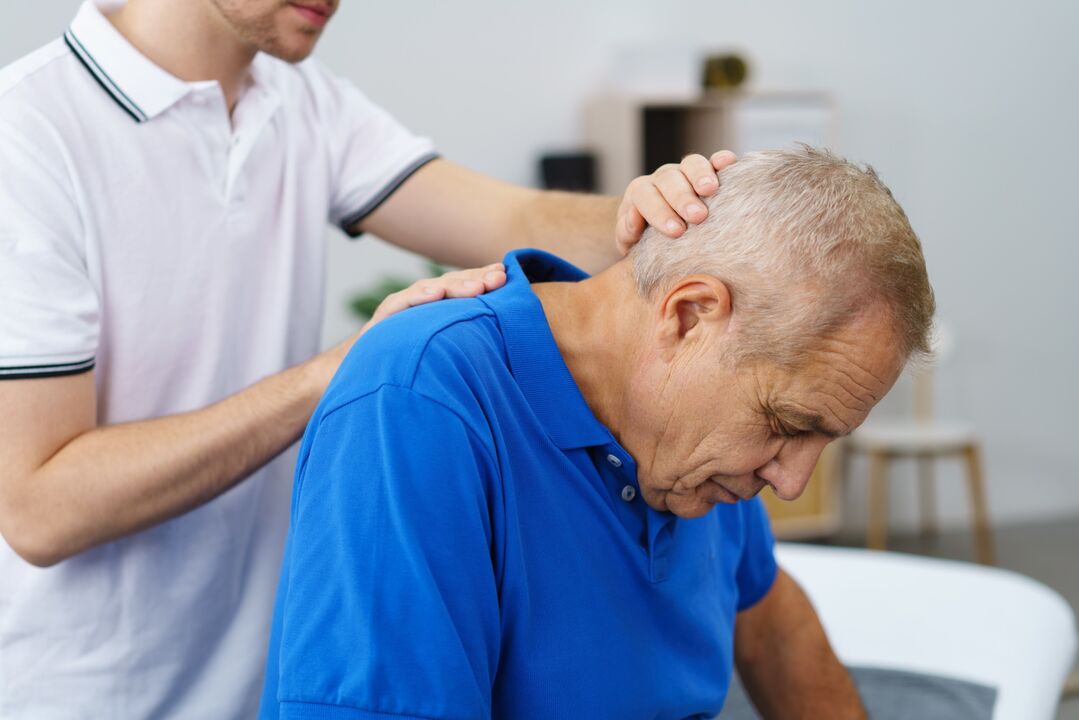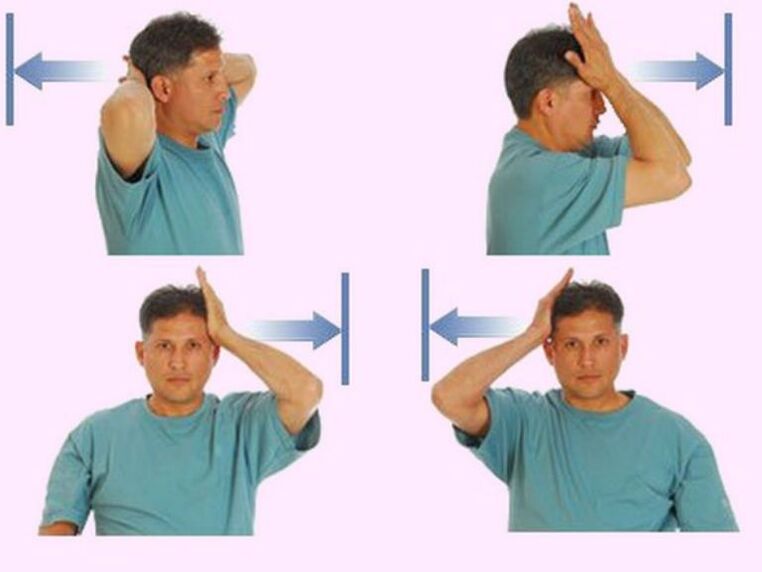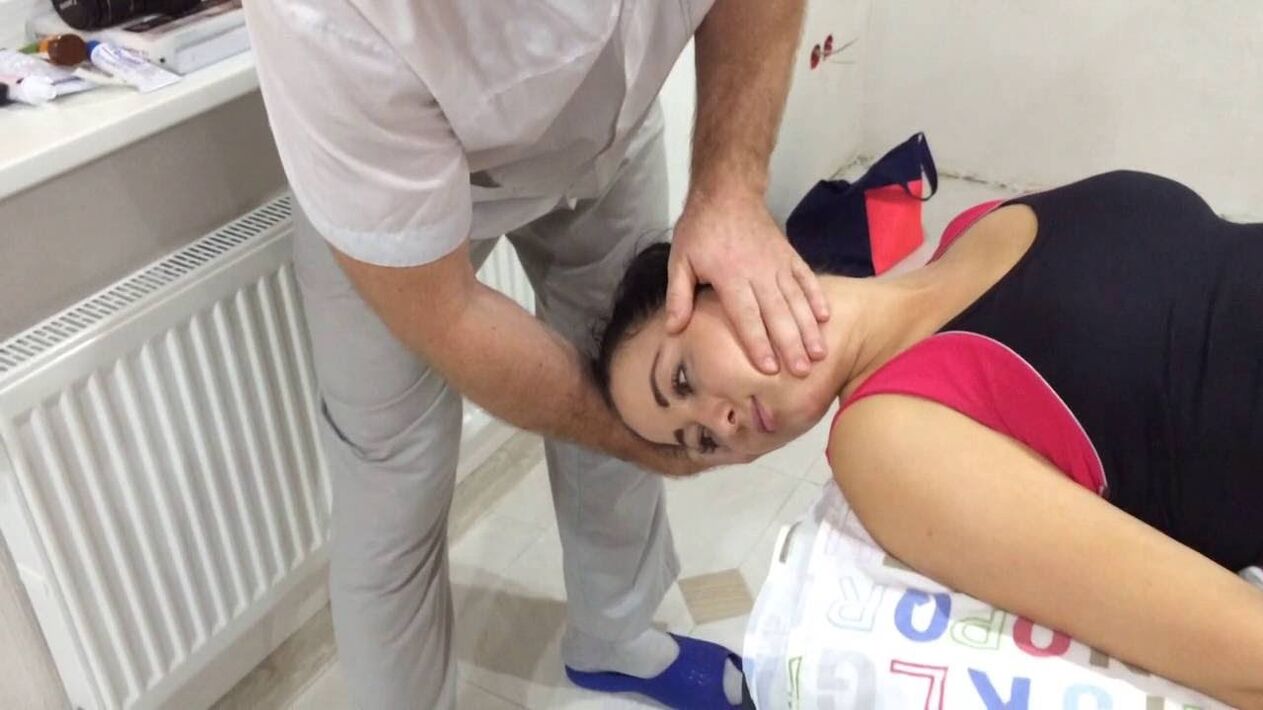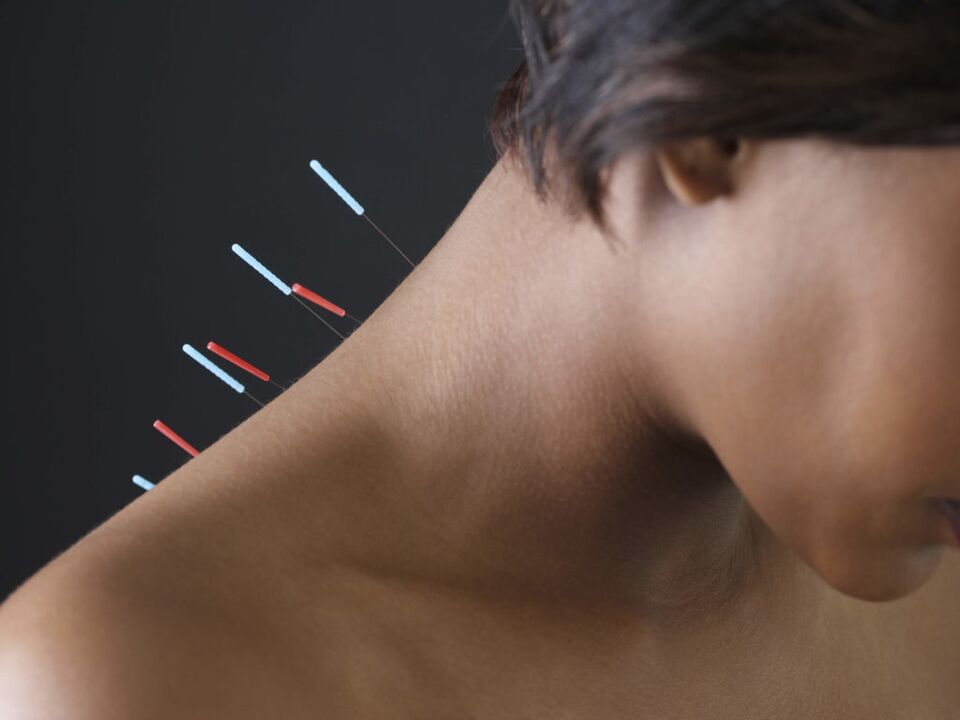
Cervical vertebral osteochondrosis is a pathological process in which the nutrition of the intervertebral disc is disturbed, resulting in gradual damage to the intervertebral disc. As the disease progresses further, the disc loses its shape and stops performing its primary function. Loss of the spine's ability to withstand physical pressure.
treatment method
Effective treatment of cervical osteochondrosis includes comprehensive treatment of the disease, a combination of drug therapy and physical therapy. If these approaches do not yield positive results, they turn to surgical intervention.
Conservative treatment includes NSAIDs, vitamins, and muscle relaxants. The former is designed to reduce inflammation and pain. If the pain is mild, a topical ointment or gel can help. The use of vitamins helps to improve blood circulation, thus providing better nutrition to the brain.
However, when the cause of osteochondrosis lies in one's lifestyle and remains the same, no medication is enough. If the disease occurs due to frequent work on the computer, it is necessary to incorporate some physical activity into the work rhythm to warm up the neck.
Physical therapy methods work well:
- electrophoresis;
- water program;
- massage;
- physiotherapy.

Therapeutic exercises will help improve blood supply to damaged joints, reduce pain, and improve neck mobility.
Significantly relieves discomfort from leech therapy and manual therapy.
As a preventive measure during sedentary work, regular self-massage is recommended to disperse stagnant blood and provide the brain with plenty of nutrients. In addition, eat regularly, get enough rest at night, and control your weight.
Cervical vertebral osteochondrosis is well corrected in its initial stages, before the onset of vertebral artery syndrome and heart pain.
Treatment is designed to remove pain, restore blood supply to the brain, and slow the progression of the disease. The patient was treated by a neurologist. Conservative treatment is as follows:
- applicationNSAIDslocal and systematic. Ointments, gels, tablets, and injections work well for osteochondrosis pain.
- In the acute phase of the disease, with severe pain, useParavertebral block- Topical administration (anaesthetics and corticosteroids).
- Medications are NSAIDs, antispasmodics,Analgesics and vitamin complex of group B.
- Since severe pain can affect the patient's neurological and mental state, sedatives may be prescribed. long-term pain (more than 4 weeks), they are replacedAntidepressants. These drugs allow you to stabilize the patient's mental state.
- In the acute phase, it can be used to reduce nerve root compressionMuscle relaxant.
- Maintain a prescribed cerebral circulationvasodilator, and means of improving the metabolism of nervous tissue).
They sometimes resort to surgical intervention due to months of ineffective conservative treatment and disease progression.
medical treatement
Medical treatment of cervical osteochondrosis involves the use of various drugs.
NSAIDs (NSAIDs)
NSAIDs (drugs) are used as symptomatic treatment to reduce inflammation and relieve pain as the disease progresses.
The course of NSAIDs for cervical osteochondrosis is usually no more than 6 weeks. These drugs are only symptomatic, and after the course of treatment, the pain may return. Often, NSAIDs are used in combination with antispasmodics to help relieve muscle tension in the paravertebral area.
Anesthetic
Topical anesthetics are effective in eliminating pain and muscle tension. Blockers are widely used in combination with anesthetics and corticosteroids, which have anti-inflammatory effects in addition to their analgesic effects.
As a local anesthetic, a solution is used that includes substances that inhibit the flow of impulses in the stimulated nerve endings and prevent them from passing through the innervated area.
hormones
Glucocorticoid therapy can adversely affect your own hormone production. Therefore, modern medicine is much less likely than before to use this group of drugs in the treatment of cervical osteochondrosis, only in the case of severe indications.
When ingested, hormonal drugs block inflammatory processes within cells.
important!Long-term use of glucocorticoids can cause cartilage destruction and should therefore be used in combination with chondroprotective agents.
Medications containing corticosteroids provide quick pain relief, but at the same time negatively affect many internal organs. Hormone therapy sessions rarely take more than 7 days, as bone loss and the development of osteoporosis are possible with longer use.
local irritant
Due to the destruction of the intervertebral disc, the displacement of the vertebrae and the inflammatory process, the blood vessels in the body tissues are narrowed. You can improve circulation with the help of a warm topical irritant ointment.
When such funds are used, blood flow to the problem area increases due to the excitation of nerve endings, helping to improve tissue nutrition processes. After applying the ointment, the treated area of the skin becomes red due to active influx. Due to the tonic effect of this type of drug, it is recommended to use it during the day.
Among the warming ointments, the most popular ones are based on niacin butoxyethyl ether. Alternatively, use capsaicin and dimethyl sulfoxide ointment..
In addition to ointments, special patches impregnated with active substances are used as local irritants. Thus, for example, ingredients of well-known chili patches include chili pepper extract, belladonna, lanolin oil. These ingredients have a stimulating effect, relieve muscle spasms and increase local blood circulation. At the same time, the delivery of oxygen to cells and tissues is accelerated, so the pain disappears.
chondroprotective agent
There is an active discussion around these drugs. Not all doctors use chondroprotective agents to treat osteochondrosis. These drugs contain glycosaminoglycans and chondroitin sulfate, which form the structural basis of the intervertebral disc. It is believed that chondroprotective agents prevent the destruction of cartilage in the spine and joint surfaces.
The composition of such preparations may contain chondrolic acid, mucopolysaccharides, animal cartilage, glycosaminoglycans, and the like.
refer to.Some experts believe that these drugs have little effect, although unlike placebos, the effects achieved cannot be compared with their high prices.
Preparations for improving blood microcirculation
This group of drugs promotes vasodilation. These drugs improve blood microcirculation, remove obstacles to venous outflow, normalize metabolic processes, stimulate regeneration and increase the frequency of nerve impulses. As a result, blood circulation is normalized, metabolic processes in soft tissues are improved, swelling is reduced, and brain activity is restored.
vitamins
For osteochondrosis, the attending physician may prescribe the intake of individual vitamins or vitamin complexes. Special attention is usually given to the B vitamins (B1, B6 and B12). Their intake enhances the nutrition of nerve fibers, supports metabolic processes in cartilage tissue and gives it elasticity, improves blood circulation and the function of the central nervous system, and stimulates metabolic processes.
In addition to the B vitamins, it is also essential to provide the body with ascorbic acid. With regular intake, the regeneration process of bone and cartilage tissue is improved, toxins are eliminated and the metabolic processes of carbohydrates, proteins and minerals are regulated. It can partially reduce the need for additional intake of vitamins B1, B2, A and E.
operation treatment
It shows no apparent effect in the use of conservative methods in the treatment of the disease as well as in the development of complications.
Indications for surgical treatment of cervical osteochondrosis:
- Spinal stenosis due to a herniated or herniated disc - a "squeeze" of the spinal cord and/or nerve roots, causing pain, cramping, weakness or numbness;
- Cervical spondylolisthesis - a condition in which the vertebrae are displaced relative to each other along the horizontal axis, sliding as they move and putting pressure on the nerve roots and spinal cord;
- Disc herniation - depends on the severity of symptoms, the severity of the patient's condition and the effectiveness of conservative treatment.
massage
Massage is one of the main treatments. In this case, it is not only useful, but an essential program. First, you need to take a professional course. For maximum effect, it is best to have at least 10 sessions. For cervical osteochondrosis, massage can achieve the following effects:
- Pain relief and muscle spasm relief;
- reduce edema;
- muscle strengthening;
- restore normal tone;
- Improves blood supply and nutrition to the intervertebral discs;
- increase the conduction of nerve impulses;
- improve metabolic processes;

A therapeutic massage session in the neck collar area can significantly improve the condition of the cartilage tissue in the neck.
After completing a professional course, you can perform simple tricks at home by yourself. Cervical osteochondrosis surgery is characterized by a combination of massage elements that passively stretch the muscles from overly tense positions. This technique must be applied after warming up the spasmodic muscle by bathing, compressing or kneading.
For self-massage, use the same technique as the professional version. These are tapping, kneading, clicking, slapping, rubbing. Massage is performed with warm hands. A massage oil should be used to improve gliding. The technical sequence is as follows:
- touch;
- grinding;
- knead;
- tapping.
Ending a self-massage session should also be stroking. It is important that there is no severe pain during the procedure.
refer to.In addition to the traditional cervical osteochondrosis massage, several other techniques are used, such as acupressure or vacuum massage. In the second case, a medical bank or a special vacuum device is used.
Massage is very useful for cervical osteochondrosis. However, there are a number of factors that are absolute contraindications:
- blood disease;
- osteomyelitis;
- thrombosis;
- malignant or benign tumor;
- Aneurysm;
- active period of tuberculosis;
- Many warts and moles on the body;
- Spider pattern on the back.
There are also temporary contraindications:
- hot;
- infectious diseases;
- Exacerbation of the chronic process.
exercise therapy
If the disease has developed and been diagnosed, the first step after the elimination of pain and neurological symptoms with the help of medication is physical therapy as an integral part of comprehensive treatment. Moderate loading of the neck muscles during relief helps strengthen and form the muscular corset that supports the discs.
The main way to prevent cervical osteochondrosis and weakness in the cervical region is to strengthen the neck muscles. This will help with the healing practice. For tangible results, you should practice at least 2-3 times a day. Starting position - back straight.
- Exercise number 1.Tilt your head slightly forward and place your hands on your forehead. Then press your palms to your forehead, without moving your neck, and hold this position for 30 seconds.
- Exercise 2.Tilt your head back and slowly turn left and right for 1 minute. This exercise improves blood flow in the veins.
- Exercise number 3.At the same time, lift your shoulders, try to bring them closer to your ears, and lower them back to their original position. Then alternate - one shoulder down, the other up. The total time is 2 minutes.
- Exercise number 4.Place your palms above your head and open your elbows out to the sides. Press your palms firmly against each other for 2-5 seconds, then release your hands. Repeat 3 times.
- Exercise number 5.Smooth forward tilt of head - exhale, back - inhale (3 times).
The gymnastics complex ends with a self-massage - rubbing the neck in a rotating circular motion.

Do a small amount of practice every day, and soon you'll feel better.
manual therapy
It is a set of non-drug treatments and diagnostic techniques designed to eliminate certain spinal disorders.
refer to.Typically, about 10 sessions at 2-day intervals. After the first surgery, patients may experience mild pain, which is considered normal. But if the pain doesn't go away in the future, you should stop the course. Persistent pain indicates low specialist expertise or an incorrect diagnosis.
On the first visit, an experienced osteopath always performs a diagnostic palpation of the neck area. Doctors identify the most painful areas and assess the condition of muscle tissue and skin. The success of further treatment will depend on properly performed tests.
The session begins with a warm-up of the muscles and a light massage. The doctor then stretches the muscles to reduce spasms in the neck. At this stage, the patient should not feel pain. After that, the therapist proceeds directly to the procedure.
This is the most painful part of the whole process. The doctor pressed the cervical vertebrae with considerable force, trying to push them back. Often during this procedure, the patient will hear a horrific crackling sound, but this is considered normal. At the end of the session, the chiropractor will do a soothing massage.
After training, avoid sudden head movements, tilts, and deflections. If possible, lie down for half an hour.

Manual therapy can restore neck movement the next day. Try contacting a chiropractor if you feel any stiffness and restriction in movement.
important!Physicians using manual therapy techniques must fully master them in order to rule out harm to patients.
acupuncture
Acupuncture affects specific areas of the body by inserting needles into biologically active points. In this case, a response occurs, manifested in the directed production of hormones that regulate metabolic processes and immune status. Thus, the inflammatory process is actively inhibited.
This therapy is effective for cervical osteochondrosis. Under the influence of surgery, blood vessels in the neck dilate, blood flow improves, oxygen and nutrients delivery to the brain increases, headaches, tinnitus, and dizziness disappear, and the inflow of the anti-inflammatory hormone cortisol into the blood increases.

Chinese medicine experts claim that they can treat more than 250 different types of diseases, including those related to osteochondrosis.
folk remedies
Traditional medicine has many recipes that can relieve the pain and discomfort of cervical osteochondrosis. However, although these prescriptions can relieve the disease, they cannot eradicate the cause, so other measures cannot be used less.
Compresses and tinctures are the most popular remedies. They warm up muscles, improve blood circulation, and relieve pain.
Recipe 1.A mixture of lard, horse chestnut, turpentine, agave and vodka. cooking method:
- 3 tablespoons horse chestnut;
- 100 g American agave;
- Camphor oil - 50 ml;
- Purified turpentine - 30 ml;
- Vodka - 200 ml;
- Unsalted lard - 50g.
Grind and mix the ingredients, then place in a dark place for 9 days. To use, spread a thin layer on brown bread and apply to sore spots. If burning sensation occurs, remove compress. After the discomfort subsides, you can repeat the process.
Recipe 2.Calendula tincture.
You need to take a glass bottle, pour 50 grams of calendula, and pour 1 cup of camphor wine. Then add a glass of cologne and a glass of vodka. Keep the closed bottle in a dark place for a few weeks. Rub the resulting tincture into the sore spot.
Prevention of osteochondrosis is easier than cure. If the patient continues to live the same lifestyle: less movement, inactivity, weight gain, all achievements in fighting the disease will be zero. This can again lead to worsening of disc disease and osteochondrosis.






































